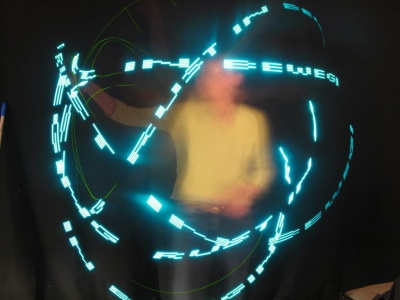About: Difference between revisions
Roelroscama (talk | contribs) No edit summary |
No edit summary |
||
| Line 3: | Line 3: | ||
[[File:Ivan ImmigrationManPage.png|link=Immigration (man page) | 400px | right ]] | [[File:Ivan ImmigrationManPage.png|link=Immigration (man page) | 400px | right ]] | ||
[[File:Screen_Shot_2013-04-02_at_12.38.11_AM.png | 400px |right]] | [[File:Screen_Shot_2013-04-02_at_12.38.11_AM.png | 400px |right]] | ||
Our students have backgrounds as filmmakers, graphic and web designers, media artists and activists, but also include architects, fine artists and dance. Our common interest is to critically think about digital and computer media, and create one's own media work based on that thinking and research. The most simple formula we use is the following: it's media design as design of media, not just with media. And that's where Free Software and Open Source come in - because they provide the building blocks for these self-created media. | |||
Our programme allows you to move flexibly and fluently across the rapidly expanding field of hybrid media practices: from software art, e-publishing, to a variety of lens-based practices for both new and traditional platforms. All elements of the course support your independent projects, providing skills that facilitate self-directed research. | Our programme allows you to move flexibly and fluently across the rapidly expanding field of hybrid media practices: from software art, e-publishing, to a variety of lens-based practices for both new and traditional platforms. All elements of the course support your independent projects, providing skills that facilitate self-directed research. | ||
Revision as of 17:13, 7 May 2013
MASTER MEDIA DESIGN AND COMMUNICATION
Our students have backgrounds as filmmakers, graphic and web designers, media artists and activists, but also include architects, fine artists and dance. Our common interest is to critically think about digital and computer media, and create one's own media work based on that thinking and research. The most simple formula we use is the following: it's media design as design of media, not just with media. And that's where Free Software and Open Source come in - because they provide the building blocks for these self-created media.
Our programme allows you to move flexibly and fluently across the rapidly expanding field of hybrid media practices: from software art, e-publishing, to a variety of lens-based practices for both new and traditional platforms. All elements of the course support your independent projects, providing skills that facilitate self-directed research.
The central elements of the course are:
- Free culture and free/libre and open source software prototyping
- A DIY / DIWO [1] approach to media- and tool-making
- Participatory media practices
- Gifs
- Sound, film & video editing skills
- Practice-based thematic projects that focus on a particular aspect of the contemporary media ecology
- Research methodologies which helps you position your own work within the current context
- Archiving, recording and presenting your work.
All these elements provide tools to differentiate your work in an increasingly complex and competitive field.
Students of the Media Design & Communication programme come from a wide variety of backgrounds, experiences and cultures, and their work encompasses a range of approaches to creating an individual media language: developing skills to create ambitious individual and group projects.
Check out our archive of graduation pieces and visit our applications page
Deadline extended to June 1st for Dutch and EU students
email Leslie Robbins with questions: L.J.Drost-Robbins@hro.nl
Some (random) examples of student work... {{#ask:Thumbnail::+ |?# |?Thumbnail |?Creator |limit=9 |format=gallery |link=all |order=random |headers=show |searchlabel=… further results |autocaptions=1 |captionproperty=Creator |imageproperty=Thumbnail }}





